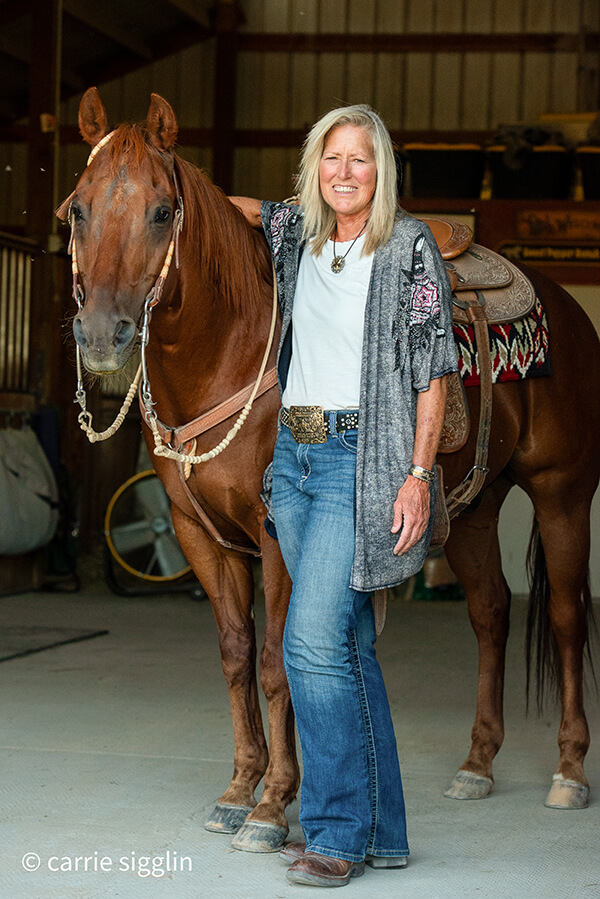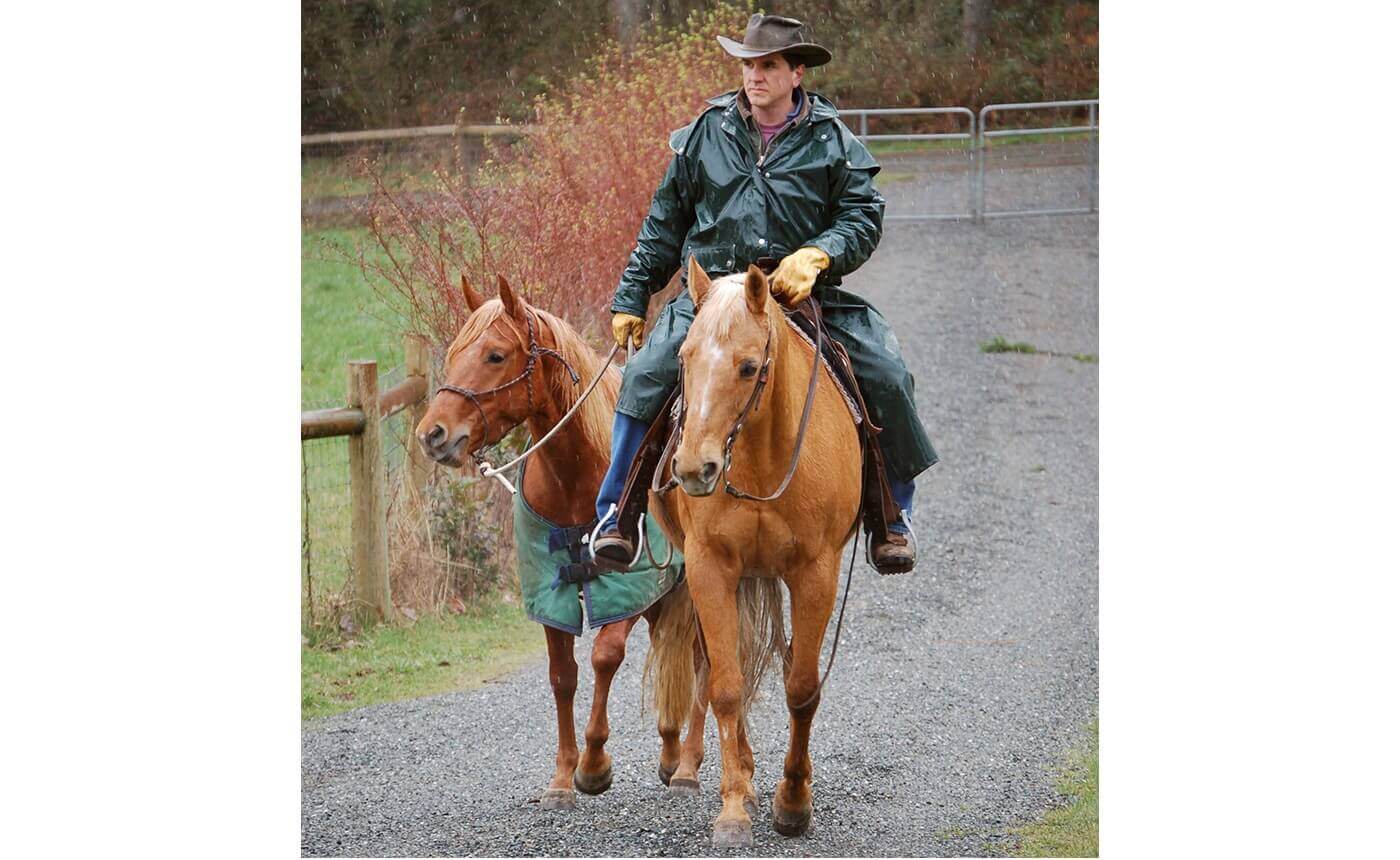Take Winter by Storm!
The dead of winter and early spring are times for damaging, dangerous storms in North America. Making chore efficiency updates on your horse property and having backup supplies on hand is helpful for getting through the most challenging time of the year for horse owners–and it may help you avoid disasters. The following are my top considerations for winter preparedness on horse properties.
Horse Shelter – Horses are well prepared to take care of themselves in cold weather. Their winter coats trap air next to their skin which helps insulate them against cold. Problems occur when there are strong winds, soaking rain, or wet snow. These conditions flatten the hair and chill the horse. To make sure your horse stays warm provide some kind of simple shelter that will protect your horse from the wind. Even a tree lined windbreak is better than nothing at all.
Emergency Equipment – Do you have a headlamp flashlight that frees up your hands? Store several in easy-to-locate areas in the house and barn. Keep them charged or with extra batteries on hand. How about fuel for generators, outdoor cook stoves, or lanterns? Having a car cell phone charger on hand is extremely important to power cell phones in case of a power outage. A cell phone with a dead battery is no help.
Lighting Needs – In winter most feeding time is in the dark–either early morning or evening. Good indoor and outdoor lighting will help immensely with chore efficiency. When you come home after work do you have enough light to pick up manure and clean stalls and paddocks? When feeding, can you see the hay well enough to weigh it and be sure it’s green and mold-free? Solar lighting along walkways or drives makes nighttime walkways safer. Prepare now instead of waiting until temperatures are freezing and you’re trying to feed by cell phone flashlight.
Water – A horse drinks 8 to 12 gallons of water per day. Academic research shows horses prefer warm water, about 45-65 degrees. Horses drink less when water is icy cold, and studies show they cannot get enough moisture by simply eating snow. Inadequate water consumption can lead to colic so make sure your horses are drinking. On very cold days you can either break ice twice daily, consider getting a stock tank heater, or get a heated bucket.
Power – If you’re concerned you might lose power to your private well, water can be stored in rain barrels or garbage cans. Emergency officials generally recommend having a three day supply of water on hand, which for horses is a minimum of 30 gallons of water per individual.
Feed Hay for Warmth – Feed more hay if the temperatures really drop. The American Association of Equine Practitioners (AAEP) recommends increasing caloric intake 15 to 20% for every 10 degree drop in temperatures below 30 degrees Fahrenheit. Hay (not grain) is the best choice for helping a horse to generate body heat. Forages are digested in the large intestine by a process that generates body heat and raises the horse’s core temperature. The recommendation is to provide plenty of good quality hay during cold water weather; free choice is best if possible.
Blankets – Be sure blankets are clean and on hand should you need them. Most horses don’t need to be blanketed as nature provides them with their own warm coat, but there may be circumstances when a waterproof turnout blanket would be helpful like in a cold, heavy downpour or a polar vortex-type freeze, or if a horse became hypothermic for other health reasons.
Clothes for People – As a horse owner, you are likely to be working with horses in inclement weather for an undetermined amount of time. Invest in a good, waterproof jacket with calf-high mud boots that are insulated. Also, insulated, waterproof gloves. You are no good to your horses if you become hypothermic and a medical emergency yourself.
Flood-proof Your Property – If you live in a flood-prone area, it’s good to review the high-water locations on your property. If it’s difficult to visualize these, get help from your county or your local conservation district. Acquaint yourself with the historic high-water locations recorded for your property.
If you live in an extremely flood prone area (of which there are many), it may be wise to consider building a “critter pad”— a large mound or small hill built out of dirt and fill material above the floodwater level that’s used to keep the animals above a flood. Critter pads usually require special permitting and must be specifically engineered using approved fill material to ensure they stand up to high traffic use, heavy rains, and high-water volumes–and still remain above flood levels.
In some cases, there may be funding or technical assistance available to help with the development of a critter pad. Contact your local conservation district, Natural Resources Conservation Service (NRCS) office or Federal Emergency Management Agency (FEMA) office sooner rather than later for assistance.
Plan and be prepared!
More good resource tips and ideas on winter preparedness are at: www.weather.gov/safety/winter-before.
Editor’s note: See our September/October issue’s feature article for part one of this article.
See this article in the November/December 2023 online edition:
November/December 2023

Alayne Blickle began in the 1990’s as a pioneer in water conservation and natural resources conservation by creating the entrepreneurial consulting business, Horses for Clean Water, an award-winning internationally acclaimed education program that looks for horse-healthy, nature-based solutions to land management challenges. She continues this work today partnering with agencies, organizations, and horse owners throughout North America and worldwide. She is a regularly contributing writer and photojournalist to several equine publications.
Alayne lives with her horse trainer husband, Matt Livengood, in southwestern Idaho where they raise and train AQHA horses and mustangs on their eco-friendly horse ranch. Contact her through the Horses for Clean Water website or through their ranch website Sweet Pepper Ranch.
For more information contact Alayne at [email protected] or 206-909-0225.






